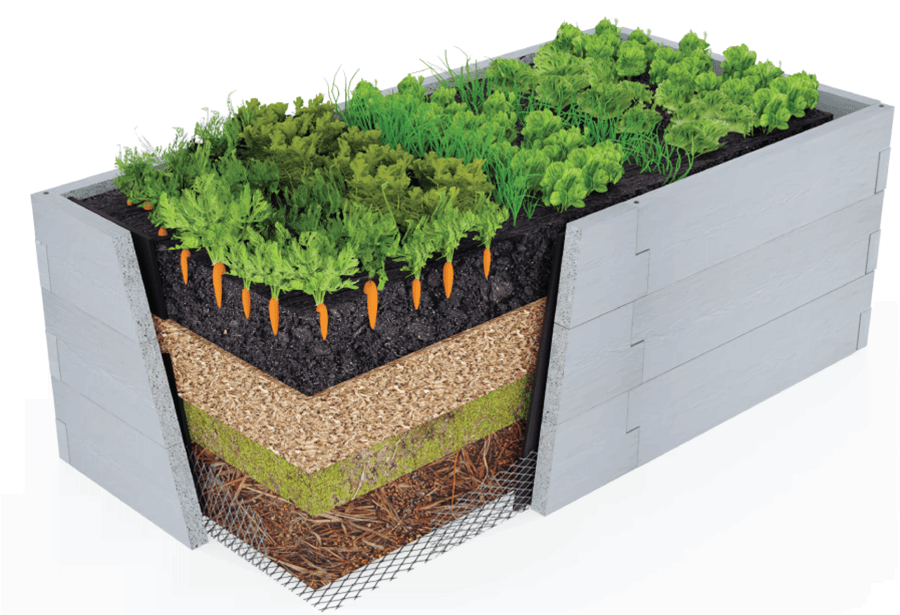

- Grid
- Branches
- Tree leaves, turf
- Compost
- Soil from the ground or from a bag
|
Leave the bottom of the box open, but protect it against rodents with fine mesh netting (maximum mesh size 1.5 cm). To reduce evaporation loss of substrate moisture, line the inner walls of the bed with plastic sheeting (pond film works well for this). The lowest part of the substrate is made of branches, tree leaves and turf cut into small pieces. |
Then lay down a layer of organic fertiliser and compost. It is important that the layers are well compacted and soaked. The high yield you get from a raised bed is directly related to the organic material in it, which gradually decomposes and gives off heat. The last component of the substrate is soil, which can be replaced by soil from a bag. |


